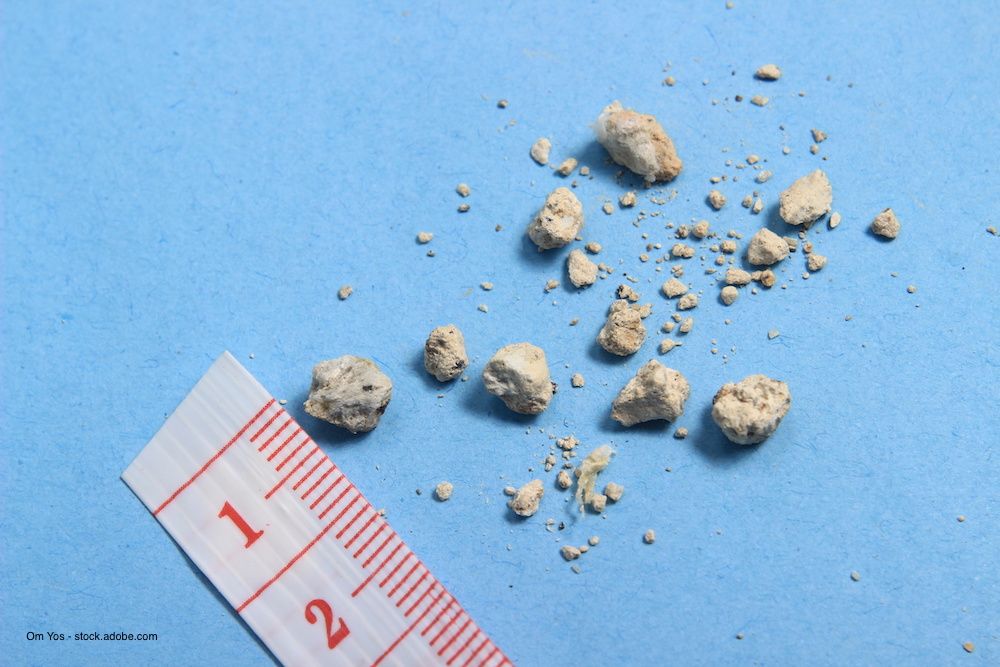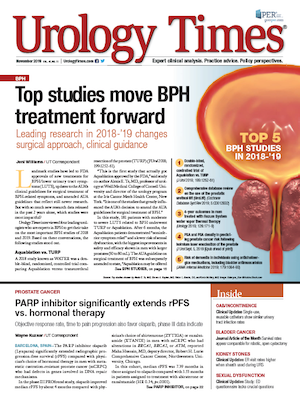Publication
Article
Urology Times Journal
High rate of residual fragments seen after URS
Author(s):
High rates of residual fragments after ureteroscopy point to the need to both improve selection of patients for this procedure and find ways to boost stone-free rates, according to researchers at UT Southwestern Medical Center, Dallas.
Om Yos - stock.adobe.com

Chicago-High rates of residual fragments after ureteroscopy point to the need to both improve selection of patients for this procedure and find ways to boost stone-free rates, according to researchers at UT Southwestern Medical Center, Dallas.
Rates of stone-related events after ureteroscopy are comparable to those reported after shock wave lithotripsy and percutaneous nephrolithotomy. Even with aggressive retrieval of kidney stone fragments after ureteroscopy for upper-tract stones, computed tomography scans show the procedure yields stone-free rates in only half of patients.
Researchers sought to determine the outcomes for patients with residual fragments following ureteroscopy. They identified 167 patients who underwent ureteroscopy between December 2015 and February 2017 and had a CT scan performed 6 to 8 weeks after the procedure. Because CT scans were used, “Our cohort of patients with [residual fragments] is more truly inclusive than previously seen in studies not utilizing early postoperative CT imaging,” the authors wrote.
From there, the authors identified 54 patients who had residual fragments 12 months or more after the procedure, with a total of 67 renal units identified. The mean number of residual fragments per patient was 2.2±1.5, and the mean size of the largest fragment was 3.7±2.0 mm, they reported at the AUA annual meeting in Chicago.
Patients were evaluated during follow-up visits using abdominal radiographs and ultrasounds. Additionally, all patients were contacted by phone to determine whether they had experienced any symptoms of stone events that could be attributed to residual fragments. The authors defined stone events as stone passage, the need for intervention, symptoms requiring an emergency department (ED) visit, or stone growth.
A review of patient charts as well as interviews with patients showed that stone-related events occurred in 48% of renal units (32 of 67):
• 12 (18%) required additional surgical intervention.
• 10 resulted in an ED visit.
• Spontaneous passage of residual fragments occurred in 11 renal units.
Just 27% of renal units remained free of a stone-related event 30 months after ureteroscopy. The mean time to a stone-related event: 15.6 months (plus or minus 8.6 months).
Next: No significant predictors of surgical intervention observed
No significant predictors of surgical intervention observed
“We found that these stone events are very frequent, and fragments of any size result in events,” study author Joseph Crivelli, MD, told Urology Times. In addition, “The size of the residual fragment was not a risk factor for an event,” said Dr. Crivelli, an endourologist at UT Southwestern, working with Brett Johnson, MD, and colleagues. In fact, multivariable analysis revealed no significant predictors of surgical intervention.
Women with residual fragments following ureteroscopy faced greater risk of a stone event, the study found.
It’s important to note that many of the stone-related events that took place were patient reported. Additionally, one of the limitations of the study is that it did not track the rate of retreatment with ureteroscopy.
“Focusing on the retreatment rate is really important,” Dr. Crivelli said. So, too, is having an understanding of the aggressiveness of the patient’s stone disease.
Given the high rate of residual fragments after ureteroscopy, efforts to better select patients or to improve stone-free rates after ureteroscopy are necessary, according to the authors.





























